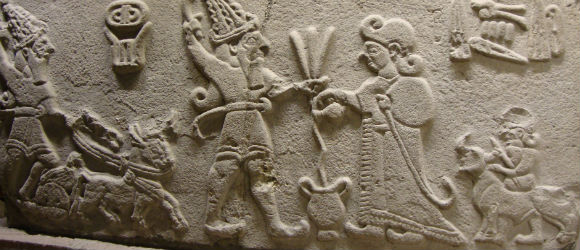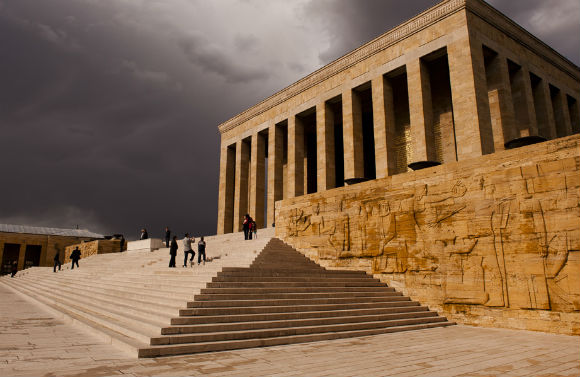The present capital of Turkey, Ankara, was founded by Phrygians in the eighth century B.C. Among the interesting places to see there is what is left of the Temple of Augustus.
This was reconstructed from an earlier temple as thanks to Augustus tor the city’s semi-independence. On the walls of the that temple is an inscription recording the public acts of Caesar Augustus which included a census. The temple was originally to a Phrygian god. Men; that became a church at the beginning of the sixth century and remained such until the city was conquered by the Turks. The Crusaders held the city for about 100 years from 1101 to 1227. By 1354 it was part of the Ottoman Empire.
There are a few other remains from antiquity in the city such as the Roman baths and a column of Justinian dated 352 AD. A seventh century citadel is on one of the hills. Before one reaches the citadel, on that same road one comes to the Museum of Anatolian Civilizations where many of the treasures from Çatal Höyük, Alaca Höyük, Kültepe, Gordium, Toprakkale (near Van), Carchemish, and many other archeological sites are displayed with excellent taste and Imagination. A much more recent monument is the large mausoleum of Atatürk Anitkabir (Mausoleum of Atatürk)) on an opposite hill.
Ancyra (Ankara),




The Museum of Anatolian Civilization in Ankara
Arguably the most important museum in central Anatolia, the Museum of Anatolian Civilizations contains priceless artifacts from the Paleolithic and Neolithic eras as well as the Hatti, Hittite, Phrygian, Urartu and Roman civilizations. Some people travel all the way to Ankara just to visit this museum and witness its fine collection.
The museum is located within two beautifully restored Ottoman buildings on the south side of Ankara Castle, so visitors can easily check out the Ankara Citadel, Ankara Castle, Old Quarters and Museum of Anatolian Civilizations all in one visit.
If you’re a history buff, this museum has your name written all over it.
The history of Ankara is incredibly rich, encompassing cultures from the Hittites to the Byzantines. Mustafa Kemal Ataturk, the father of modern Turkey, was largely responsible for turning this city into the urban metropolis that it is today when he made it the capital of his new republic.
Ankara is the capital city of Turkey and the second largest city in the country afterIstanbul. It is located at the heart of both Turkey and Central Anatolia. The city is an important commercial and industrial city, and it also houses the Turkish government, and all foreign embassies. The population is around 4.5 million.
The locals are generally helpful to tourists, and many young people can communicate in English. Although most people will try to speak English with you, it’s a good idea to bring a Turkish phrasebook or dictionary. Ankara is the administrative center of Turkey and a huge university town such that most of its inhabitants consist of civil servants, students and academics.
“You must visit Anitkabir!”